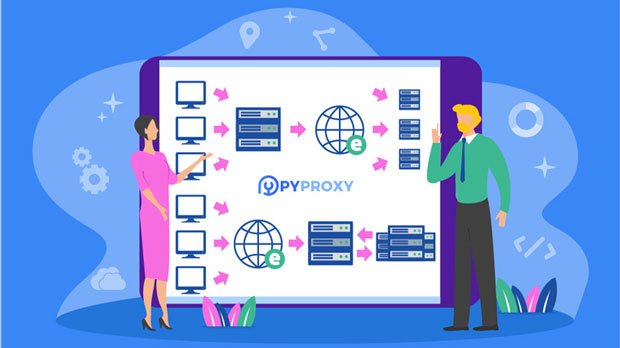Free socks5 proxies and paid proxies each have their own unique advantages and limitations. While free SOCKS5 proxies may seem appealing due to their zero-cost nature, they come with various restrictions that can compromise privacy, security, and performance. On the other hand, paid proxies often provide enhanced features that cater to specific needs, offering a more reliable and secure browsing experience. This article will analyze the key differences between free and paid SOCKS5 proxies, focusing on their limitations, benefits, and the factors that make paid proxies a superior choice for many users. 1. Security: Free vs Paid SOCKS5 ProxiesSecurity is one of the most significant concerns when using proxies. Free SOCKS5 proxies often lack essential security features, such as encryption or robust privacy protection mechanisms. They are more prone to malicious attacks or data leaks due to the absence of sufficient measures to secure the users’ data. Moreover, free proxies may log user activity, exposing sensitive information, which compromises anonymity.In contrast, paid SOCKS5 proxies are usually more secure, with providers offering higher-grade encryption and other protective mechanisms. Paid services often commit to a no-logs policy, ensuring that user activity remains private. This level of security is particularly important for users who need to maintain confidentiality, such as businesses, journalists, or individuals engaged in sensitive online activities.2. Speed and Reliability: A Critical ComparisonThe speed and reliability of a socks5 proxy are essential for delivering a seamless browsing experience, especially when accessing content-heavy websites or streaming services. Free SOCKS5 proxies are often overcrowded with users, which can lead to slow connection speeds, frequent disconnects, and poor reliability. Additionally, the free nature of these proxies means that they may not always be maintained well, resulting in frequent downtime or inconsistent performance.Paid SOCKS5 proxies, on the other hand, generally offer faster speeds and greater reliability due to better infrastructure and dedicated support. Paid services invest in high-quality servers, ensuring that users experience minimal lag, faster data transfer, and uninterrupted connections. For users who require consistent and fast proxy performance, especially in professional environments or for high-demand tasks, paid proxies offer a significant advantage over free ones.3. Geo-Location FlexibilityGeo-location flexibility refers to the ability to access websites and services restricted to specific geographic regions. Free SOCKS5 proxies often provide limited access to certain countries or IP locations, meaning that users may struggle to bypass geo-blocked content. Moreover, many free proxies may not offer a wide range of locations, which limits the diversity of browsing experiences.Paid proxies, however, allow users to select from a vast range of global locations, providing greater freedom to access content from around the world. This feature is particularly beneficial for businesses and individuals who need to perform location-specific tasks, such as accessing foreign content, testing websites from different regions, or conducting market research in various countries.4. Anonymity and Privacy ConsiderationsWhile both free and paid SOCKS5 proxies can offer a degree of anonymity, free proxies typically provide a lower level of privacy. Many free proxy providers may track user activity or inject ads, undermining anonymity. Additionally, free proxies often use shared IP addresses, making it easier to track and identify users.Paid proxies, however, offer a higher level of privacy and anonymity. Providers often offer dedicated IP addresses, making it much harder for third parties to trace the user’s activities. Paid proxies also tend to be more transparent in terms of their privacy policies, and most do not engage in logging user data. This makes paid proxies an excellent choice for individuals who prioritize privacy and wish to protect their identity while browsing the internet.5. Customer Support and Service QualityCustomer support is an essential factor when selecting a proxy service. With free SOCKS5 proxies, users typically receive little to no support. Free proxies are often managed by individuals or small groups who lack the resources to offer efficient troubleshooting or resolve technical issues. Users of free proxies may experience frustration when problems arise and have no one to contact for help.Paid SOCKS5 proxies, however, generally come with 24/7 customer support, including live chat, email, or phone assistance. This ensures that users can quickly address any problems and get help when needed. The quality of support provided by paid proxy services is often superior, as these services are operated by professional teams committed to maintaining a high level of service.6. Legal and Ethical ConsiderationsThe legality of using proxies depends on how they are employed. Free SOCKS5 proxies, in particular, can raise concerns regarding their legality and ethicality. Since these proxies are often provided without regulation or oversight, they may be used for illegal activities such as data scraping, spamming, or bypassing security measures on websites. Additionally, using a free proxy service may expose users to potential legal liabilities if the service provider is involved in any unlawful activities.Paid SOCKS5 proxies, on the other hand, tend to follow more stringent ethical standards and legal frameworks. Providers of paid proxies are usually more reputable and are bound by laws that regulate their activities. Furthermore, paid services are less likely to engage in activities that could expose users to legal issues. For users who are concerned about the legal implications of their online actions, paid proxies offer a safer and more compliant alternative.7. Cost Considerations: Is it Worth the Investment?While the cost of a paid SOCKS5 proxy may seem high compared to free alternatives, the benefits often justify the investment. Free proxies might be tempting due to their no-cost nature, but the drawbacks in terms of security, speed, reliability, and privacy can lead to more significant problems in the long run.Paid proxies provide value for money by offering enhanced features, better service, and greater peace of mind. For businesses, professionals, or anyone requiring high levels of performance and security, the investment in a paid proxy service is often well worth it. The cost may be seen as a small price to pay for the quality, reliability, and security that comes with paid SOCKS5 proxies.Conclusion: Choosing Between Free and Paid SOCKS5 ProxiesUltimately, the decision between free and paid SOCKS5 proxies depends on the user’s needs and priorities. Free proxies may suffice for casual users with limited needs, but for those requiring higher levels of security, speed, reliability, and privacy, paid proxies are the clear choice. When considering the long-term benefits of paid services in terms of performance, customer support, and peace of mind, investing in a paid SOCKS5 proxy service is often the smarter option for users who take their online experience seriously.
Jan 15, 2025





























































